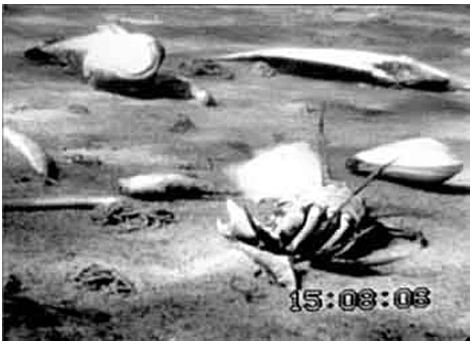Ocean Dead Zones - Effects of Marine Pollution
What Are Ocean Dead Zones?
There is plenty of marine life under the depths of sea, but it is not the same everywhere. In this article I will tell you about dead zones, their formation, causes and effects. But do not confuse dead zones with the Dead Sea which we studied in a previous article. So lets find out about ocean dead zones
Dead Zones are low-oxygen or oxygenless areas in oceans where marine life cannot be supported. The dead zones are not only devoid of fishes but also of any type of sea food. Today there are approximately 405 dead zones in the world today and many more are in the process of formation.
Dead zones can be of any size, from few square kilometers to the largest of 70,000 square kilometers. Several human activities are leading to the formation of these dead zones. Dead zones are generally found near highly populated areas and even near coast lines. Dead zones are not just seen in oceans but many fresh water bodies too.
What Causes Dead Zones?
Dead zones are primarily a result of human activities. They are caused due to increase in chemical nutrients in water, mainly caused by human interference. This phenomena is known as eutrophication.
Increase in nutrients leads to the formation of Algal blooms which when die consume high level of dissolved oxygen leading to hypoxic or oxygen-less conditions. Chemical discharges from the industries and fertilizers from the urban land use are the prime sources of these nutrients.
Formation of Dead Zones is also attributed to the continuous increase of carbon dioxide in the atmosphere. One third of this carbon dioxide is absorbed by oceans, leading to acidification of sea water and thus reducing the oxygen content.
Some natural phenomena has also lead to the formation of dead zones. Places like Black sea have shallow sills which cause the water to be stagnant and reduce the oxygen content due to minimum circulation.

What Are The Effects Of Dead Zones?
Dead Zones have varied and long time effects on marine life. Low oxygen content in water leads to reproductivity problems in marine organisms by decreasing the size of reproductive organs, number of eggs and spawning activity. In larger dead zones fishes try to escape the suffocating locations but often become unconscious half way and eventually die. Slow moving Creatures like Crabs, Lobsters and oysters cannot escape these conditions and thus die on the sea bed.
Global warming and acidification together have made the oceans warmer. This high temperature of water leads to lower circulation of water, leading to favourable conditions for the formation of dead zones.

Where Are They Located?
The first dead zone to be located was Chesapeake Bay in the east coast of U.S. Since then, many dead zones have been found in the Baltic Sea, Scandinavia’s Kattegat Strait, the Black Sea and the northern Adriatic Sea. Maximum of the world’s dead zones are found in the Europe and U.S east coast. The largest dead zone in these areas is of 45,000 square kilometer.
Many dead zones have been found near Japan, China, Australia and New Zealand. The most dangerous dead zone in the world is in the Gulf Of Mexico, caused due to the dumping of fertilizers by the Mississippi river from the Midwest. A 300 square kilometer dead zone found in near Oregon is one of its kind. This dead zone is seen only in summers and that too for a specific period of time.


References
Mee, Laurence (November 2006). “Reviving Dead Zones”. Scientific American
Diaz, R.J., and Rosenberg, R. 2008. Spreading dead zones and consequences for marine ecosystems.
Image Credits
https://www.treehugger.com/dead-zone-cycle-080815.jpg
https://www.instablogsimages.com/images/2008/06/21/dead-zone-in-the-gulf-of-mexico_P75Qn_2263.jpg
https://laterallineco.com/blog/wp-content/uploads/2008/08/marine_dead_zones_map.jpg
https://thewere42.files.wordpress.com/2009/04/ocean-dead-zone.jpg
https://www.blog.thesietch.org/wp-content/uploads/2007/03/fishkill.jpg
